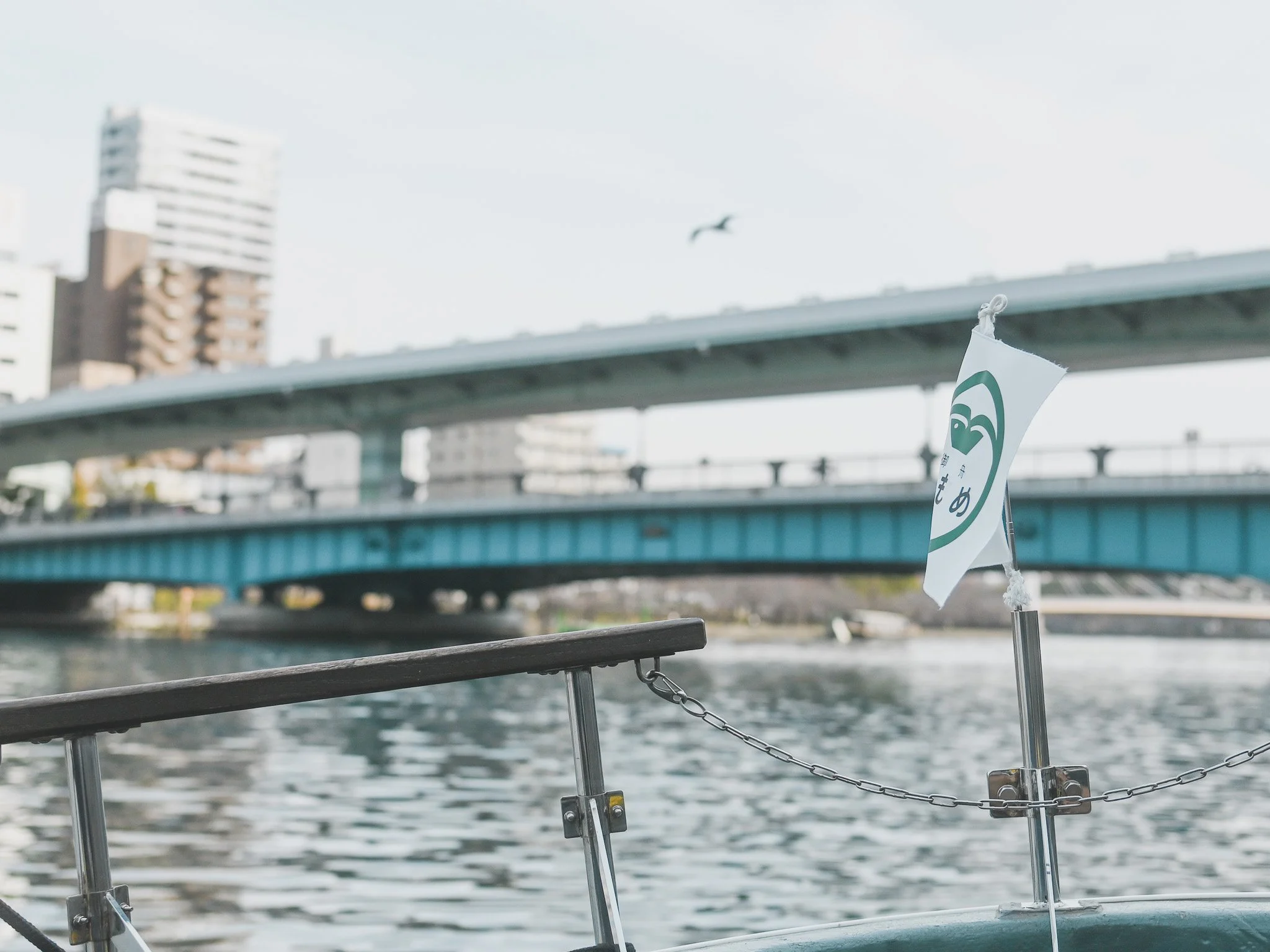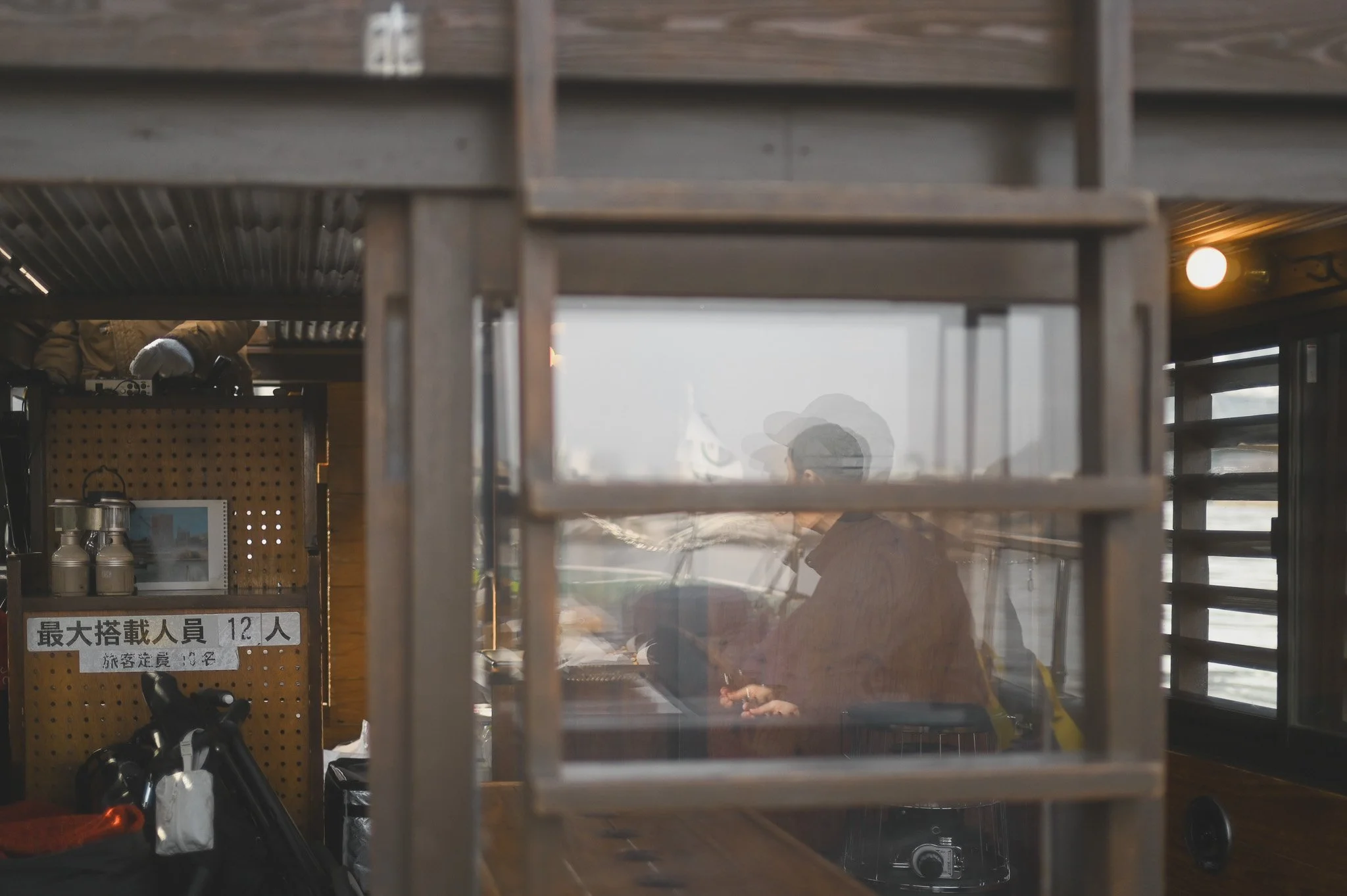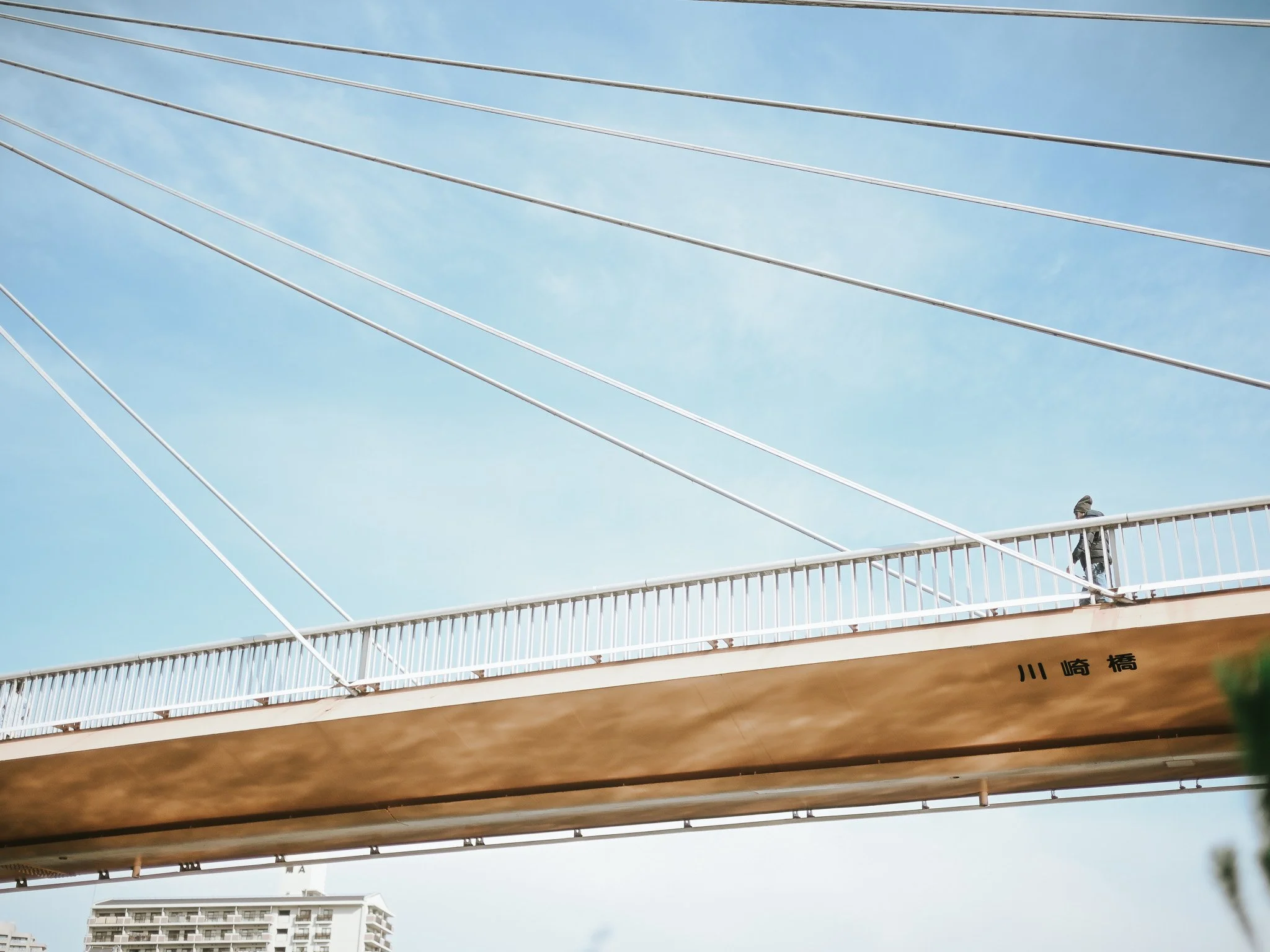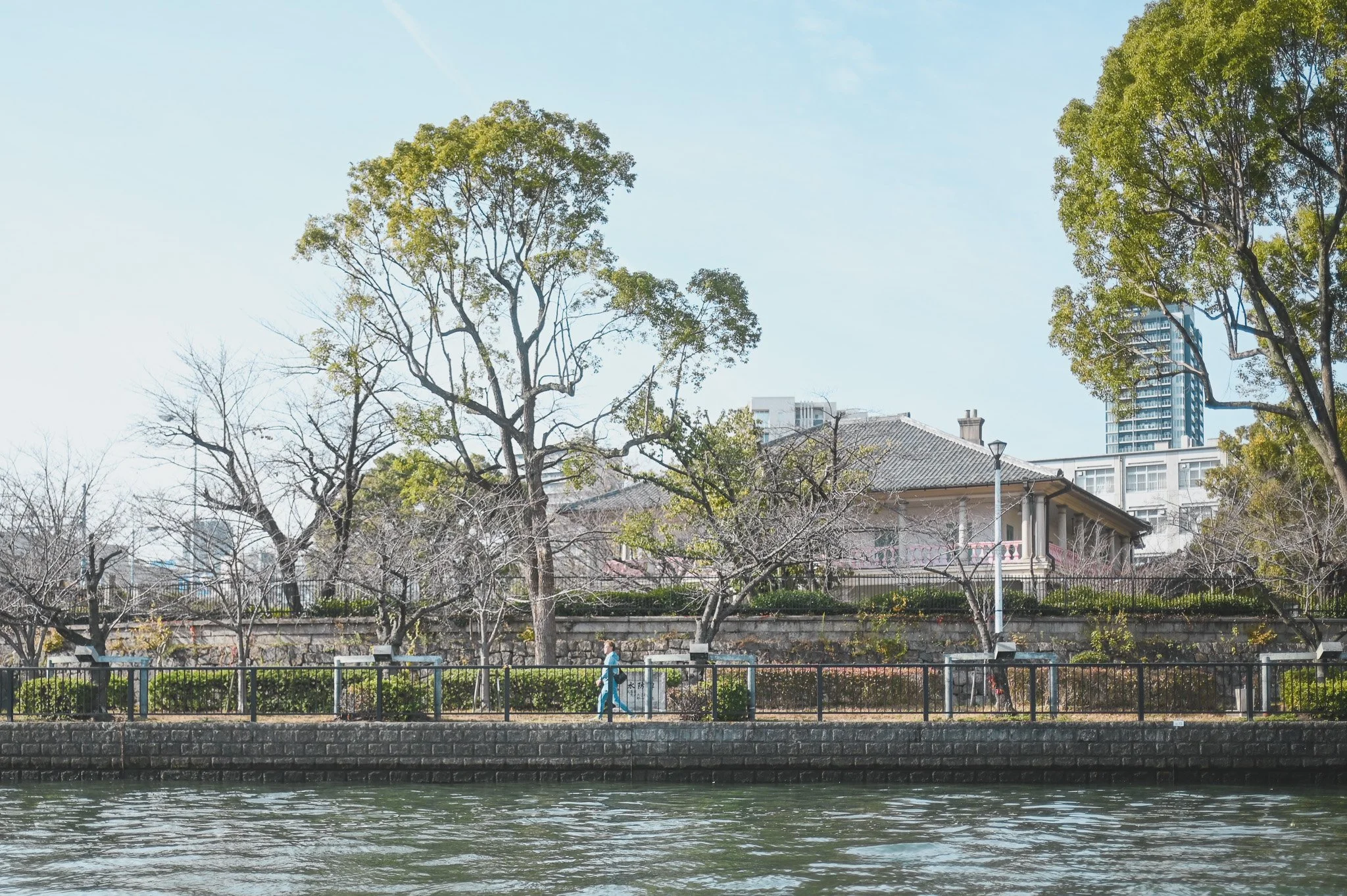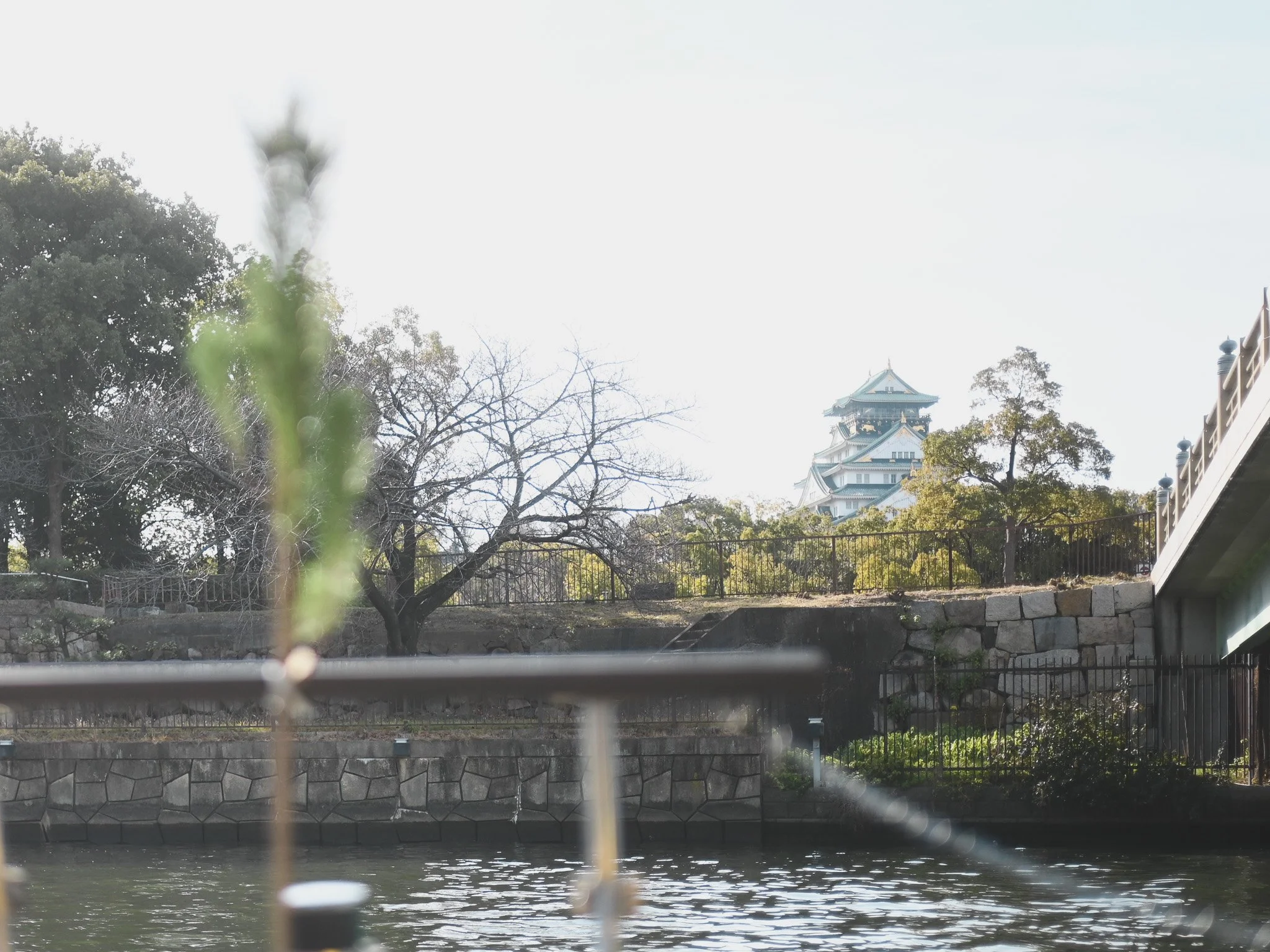Osaka from the Water
To close 2024, we escaped the busy streets of Osaka to its labyrinth of rivers and canals. Osaka’s cultural and economic beginnings are deeply steeped in the waters that surround it. So instead of exploring on foot, we opted for a river tour. After all, what better way to explore the city of water, than from water?
We boarded our ride at the hachikenyahama pier, where we were greeted by our captain, Hiromi-san, standing before ofune camome – the smallest sightseeing boat in Osaka. Previously a fishing boat, ofune camome was converted into what felt like a cosy floating house. As the only guests on the breakfast cruise that morning, we were seated on deck where we could be close to the waters, enjoy the breeze and the sunshine whilst keeping warm under the kotatsu.
The seasonal simple but wholesome breakfast spread from Sugigobei farm in Hirakata – an organic vegetable bun, a hard boiled egg, sweet potato chips, peanuts, and a mandarin.
From the first few minutes on board, we quickly understood why Osaka was known as happyakuya-bashi 八百八橋 (eight hundred and eight bridges) during the Edo period. Multiple bridges greeted us along the course, connecting places and people whilst offering an architectural feast for our eyes. Hiromi-san’s deep knowledge about the bridges revealed their historical and cultural significance, transforming them from mere structures into vital parts of the city’s fabric. With the bridges overhead, we experienced Osaka’s rhythm from a fresh perspective.
On the course, we were introduced to key landmarks such as the Osaka Central Public Hall – an iconic neo-Renaissance building built in 1913, the Bank of Japan – a full-scale Western-style building built in 1903 and modeled after the National Bank of Belgium, the Sempukan, the city’s oldest, full-scale Western style building, the Osaka Castle, and more. We also passed by Sakuranomiya Park, famous for cherry blossoms and home to a little surprising urban beach right in the middle of the city – a first for us!
Osaka Central Public Hall
Sempukan
Osaka Castle
Urban beachfront at Sakuranomiya Park
Throughout the 80 minutes, we unconsciously matched our internal tempos to the gentle lapping of the waves against the boat, to the low hum of the engine and to the calm waters that surrounded us. In my mind, I sketched a personal Osaka skyline – bound not by physical locality, or by the chronological order in which I experienced the scenes. It was a montage of buildings old and new, bridges, sculptures, monuments and urban installations scattered throughout the bay, greenery, the Osaka castle, and skyscrapers that reflected the cerulean blues of the skies that day.
From the water, time seemed to flow differently, as if the currents carry the past, present, and future in their embrace. It is a place where history and modernity intertwine, where every corner holds a story, and where the bridges serve not just as pathways, but as symbols of connection — between people, between places, and between the city and its soul.
If you are looking to appreciate Osaka from a different and unhurried perspective, you could perhaps take a moment to explore its waterways the next time you visit this city of water.
A TINY BOAT DESIGNED TO ENJOY OSAKA: OFUNE CAMOME
Text and images by ANATOMY OF THINGS
